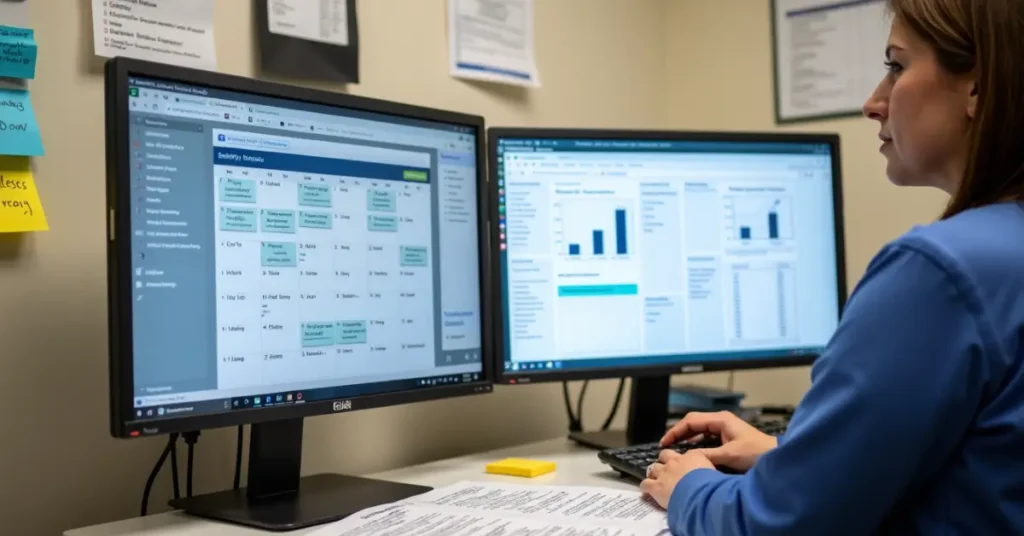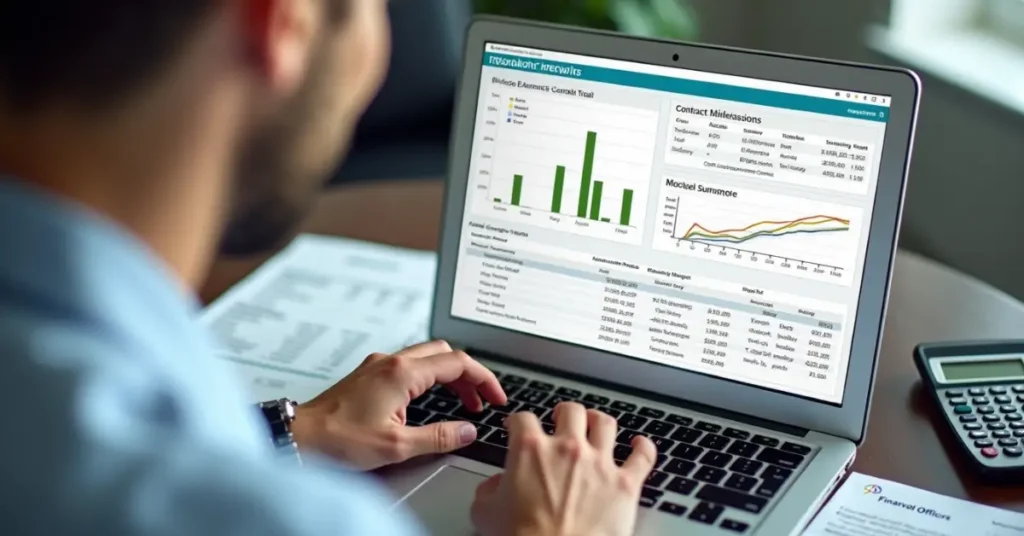
In this article:
Managing clinical trials involves numerous moving parts, including patient tracking, data handling, scheduling, and regulatory checks. For research teams, this can quickly become overwhelming without the right tools. That’s where modern digital platforms come in.
A clinical trial management system (CTMS) offers a more structured way to manage clinical trials. It helps simplify workflow, protect patient data, and provide real-time access to critical updates. CTMS platforms are built to support growing demands in both traditional and decentralized clinical research.
In this guide, you’ll learn what a CTMS is, how it supports the clinical trial process, its key features, and core benefits. We’ll also explore what to look for when it’s time to choose a CTMS that fits your needs.
What Is a CTMS?
A clinical trial management system (CTMS) is software used to help plan, track, and manage different parts of clinical trials. It acts as a centralized platform that brings together tasks like scheduling, site coordination, document management, and progress tracking. A CTMS is designed to support sponsors, CROs, and research organizations throughout the entire clinical trial process.
In both traditional and decentralized clinical research, a CTMS improves team coordination and ensures that essential steps are completed on time. Whether working on small single-site clinical studies or large global trials, a CTMS helps streamline operations and maintain compliance.
CTMS vs EDC: What’s the Difference?
Both CTMS and EDC tools are essential in managing clinical trials, but they serve different purposes. A CTMS focuses on study operations, like visit scheduling, milestones, and coordinating with sites and stakeholders. It helps organize timelines and activities across teams.
An EDC system, on the other hand, is used for data capture, collection, and storage of patient data during the trial. It is built to handle forms, lab results, and clinical outcomes from participants.
The connection between CTMS and EDC becomes more valuable in decentralized trials. Integrating both tools allows research teams to manage trial tasks while keeping data flow consistent.
Key Features of a Clinical Trial Management System
A strong clinical trial management system (CTMS) supports many parts of daily study operations. The tools below show how a CTMS can improve the management of clinical trials in research organizations.
1. Participant and Site Management Tools
One of the core functions of a CTMS is managing participants. Teams can track patient recruitment, monitor enrollment, and set up visit schedules for each site. It also helps with consent tracking and assigning tasks to the study management team.
These tools are especially useful in decentralized settings, where trial sites may be spread across locations. Keeping all teams aligned improves adherence and helps participants stay engaged throughout the study.
2. Real-Time Monitoring and Data Access
Modern CTMS platforms include dashboards and alert systems that offer real-time views of study activity. From device readings to participant check-ins, these tools show what’s happening at any moment.
This is valuable for studies that use wearables or remote sensors. These tools support ongoing data integration from multiple sources and give research teams fast access to what they need.
3. Document and Compliance Management
Managing regulatory documents is easier with tools like electronic trial master files (eTMF) and audit trail tracking. A CTMS often includes version control, file storage, and access settings.
These tools help maintain regulatory compliance with global standards like 21 CFR Part 11. By keeping records organized and up to date, CTMS platforms support clean audit processes and protect sensitive trial data.
4. Financial and Contract Management
Many CTMS tools also offer built-in budget management. These tools track payments to trial sites, manage contracts, and keep spending aligned with study plans. Having financial data in one place adds transparency and helps reduce errors. This ensures that payments are fair and on time while assisting teams to avoid overspending.
5. Reporting, Analytics, and Visualization
A CTMS gives teams access to study trends, performance scores, and other reports. These tools support faster decisions by showing what’s working and what needs attention.
Advanced platforms may also include clinical data management tools that offer forecasting, visual charts, and automated summaries. These features help teams plan and adjust quickly when needed.
Benefits of Using a CTMS Platform
A well-designed CTMS solution brings clear improvements to how teams manage and monitor clinical trials.
1. Better Data Integrity Across the Study Lifecycle
Automated tools in a CTMS help standardize data collection across sites and devices. This reduces the risk of duplication and missing fields, which improves the overall accuracy of clinical records.
Using consistent tools for data capture ensures smoother tracking across wearable devices, home sensors, and other endpoints. When systems stay aligned, teams can trust the quality of the clinical data they review.
2. Improved Operational Efficiency
CTMS platforms reduce the need for repetitive work like manual data entry, visit tracking, and payment logging. With many tasks happening automatically, staff spend less time updating spreadsheets or chasing documents.
This efficiency allows teams to shift focus to patient care, recruitment, and practical clinical trial management. With fewer delays in the process, studies stay on track, and resources are better used.
3. Enhanced Security and Regulatory Compliance
Clinical trials involve sensitive patient data and strict rules. A CTMS helps maintain regulatory compliance by supporting secure access, tracking document changes, and organizing study files.
Strong user permissions and audit trail features ensure that only approved users handle key data. These steps are vital for meeting standards like HIPAA1, 21 CFR Part 11, and GCP. When done right, clinical trial data security becomes a built-in part of daily operations.
4. Stronger Collaboration Across Teams and Sites
A CTMS creates a single platform for stakeholders to access updates, assign tasks, and share results. Role-based access and shared views make it easier for sponsors, coordinators, and sites to stay in sync. This level of teamwork is fundamental in multi-site clinical studies or DCTs.
Factors to Consider When Choosing a CTMS
When picking a clinical trial management system, think about what your team needs now and in the future. A good CTMS should match your goals.
- Ease of Use and Onboarding: A CTMS should be simple to use. A straightforward layout helps teams get started faster with less staff training. This is helpful for busy teams with little time to learn new tools. Look for platforms where users can be restricted to certain views or tasks. This keeps the system secure and easy to manage.
- Integration and Scalability: Choose a system that connects seamlessly with your other tools, like EDC, eTMF, or LIMS. The integration of CTMS and EDC helps reduce errors and keeps everything in sync. The CTMS should also grow with you. It should handle more users, trials, or research sites as your work expands.
- Deployment Model and Data Hosting: CTMS platforms can be cloud-based, on-premise, or both. Cloud systems are faster to set up and easier for remote teams. On-premise systems give you more control, but they take more work to manage. Pick the model that fits your study setup and IT team.
- Vendor Support and Total Cost of Ownership: Don’t just look at the starting price. Think about the cost over time. This includes updates, support, and extra users. Check if the vendor offers good support when problems come up. Strong help and transparent pricing make it easier to get better trial outcomes.
Wrapping Up: The Role of CTMS in Modern Trials

A clinical trial management system is more than just a tool; it brings structure to the many moving parts of a study. From planning and setup to site tracking and reporting, a CTMS helps manage key aspects of clinical trials. Whether the study is traditional or decentralized, the right system improves coordination and supports teams across locations.
A strong CTMS improves workflow, protects data, and supports decisions made throughout the trial. It provides a single source of truth for teams to access schedules, documents, and updates. Most of all, a good CTMS is easy to use, offers real-time data, and helps maintain high data integrity and security. These features matter more than ever in today’s fast-moving research space.
If your team is looking for a secure, DCT-ready CTMS that supports wearable integration and real-time insights, CDConnect™ offers a future-ready platform built for modern clinical trials.
Frequently Asked Questions About CTMS Platforms
Which Software Is Used in Clinical Trials?
Several platforms are used in clinical trials, depending on the study’s needs. Standard tools include a clinical trial management system (CTMS), electronic data capture (EDC), and clinical data management systems (CDMS). A CTMS is a key tool for clinical trial teams because it supports scheduling, tracking, and document handling in one system.
What Is the Difference Between a CTMS and a CDMS?
A CTMS focuses on the project management aspects of a clinical trial, such as site coordination, managing clinical trial data, timelines, and reports. A CDMS, or Clinical Data Management System, is used to collect, clean, and store patient data. While both systems help run trials smoothly, they serve different functions within the study lifecycle.
What Is the Difference Between a CTMS and an eTMF?
A CTMS handles the broader planning and operations of a study, including task tracking, site activity, and reporting. An eTMF (electronic trial master file) is a specialized system used to store essential documents. Many modern CTMS platforms include features that overlap with eTMF systems for easier access and better compliance.
When Selecting a CTMS, What Criteria Should Be Considered?
Look for a CTMS that provides controlled user accounts, role-based access, and ensures data security. The system should also be easy to use, scalable, and offer strong vendor support. A good CTMS can help simplify tasks, cut down errors, and improve communication across sites. Also, make sure it provides a secure environment to protect sensitive trial information.
Does a CTMS Support Compliance With 21 CFR Part 11?
Yes. A strong CTMS includes controls for 21 CFR Part 11 to meet regulatory standards. This means it supports electronic signatures, audit trails, and secure data handling. These features ensure that all management activities meet both ethical and legal requirements during the trial.
How Does a CTMS Help Organize Study Data?
A CTMS works as a unified platform that keeps study schedules, documents, and site updates in one place. It tracks anonymized subject records and presents them through organized data views within a study. This makes it easier for teams to find what they need and make informed decisions.
Reference: